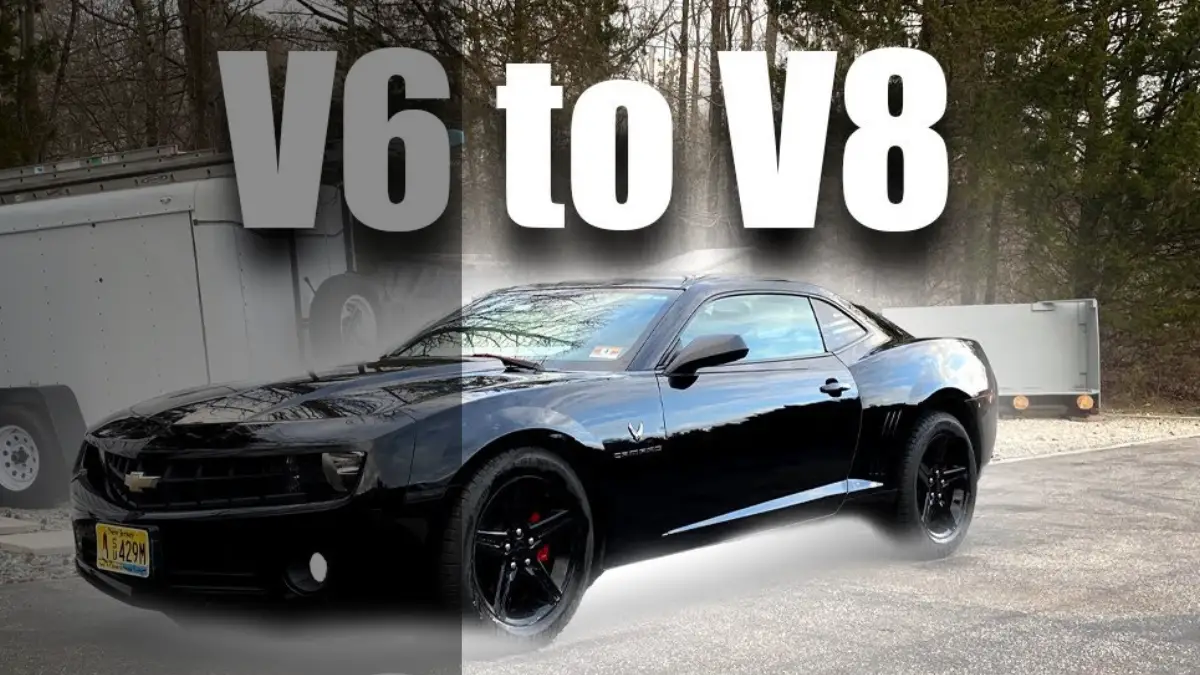The process of swapping a V6 engine for a more powerful V8 engine involves several technical considerations and modifications. A V8 engine has a larger displacement and typically offers increased horsepower and torque, making it an attractive choice for automotive enthusiasts looking to improve their vehicle’s performance.
However, a V6 to V8 swap is not a simple plug-and-play operation, as it requires careful planning and attention to various technical aspects, such as engine mounts, cooling systems, transmission compatibility, suspension and braking systems, electrical modifications, fuel system upgrades, and compliance with emissions regulations.
In order to successfully complete a V6 to V8 swap, it is crucial to have a thorough understanding of the technical requirements and challenges involved.
This entails researching the compatibility of the chosen V8 engine with the donor vehicle, sourcing the necessary components, and potentially enlisting the help of professionals with experience in engine swaps.
By addressing each of these technical aspects, you can ensure a successful and rewarding V6 to V8 swap that enhances your vehicle’s performance and driving experience.
- What are the main differences between a V6 and V8 engine in terms of technical specifications? The V6 and V8 engines differ primarily in the number of cylinders and their configuration. A V6 engine has six cylinders arranged in a V-shape, while a V8 engine has eight cylinders in a similar configuration. This typically results in increased horsepower and torque output in a V8 engine, but may also increase weight and fuel consumption.
- What modifications are required to the engine mounts when swapping a V6 for a V8?Engine mounts often need to be upgraded or repositioned to accommodate the larger size and weight of a V8 engine. This can involve fabricating custom mounts, modifying existing mounts, or purchasing aftermarket mounts designed specifically for V6 to V8 swaps.
- How does a V6 to V8 swap affect the cooling system? A V8 engine generally produces more heat than a V6 engine, necessitating an upgrade to the cooling system. This can involve installing a larger radiator, upgrading water pumps, or using high-performance coolant to better dissipate heat.
- What changes to the exhaust system are necessary when performing a V6 to V8 swap? The exhaust manifold and exhaust system need to be modified or replaced to accommodate the additional cylinders and increased exhaust flow of a V8 engine. This typically involves installing V8-specific headers, a custom exhaust system, or an aftermarket exhaust system designed for the swap.
- Will I need to upgrade the transmission when swapping a V6 for a V8? Upgrading the transmission is often necessary when performing a V6 to V8 swap. The additional torque and horsepower output of a V8 engine can strain or damage a transmission designed for a V6. You may need to install a stronger transmission or perform modifications to your existing transmission to handle the increased power.
- How does a V6 to V8 swap affect the suspension and braking system? The increased weight of a V8 engine can impact the vehicle’s suspension and braking systems. Upgraded suspension components, such as stiffer springs, performance shocks, and larger sway bars, may be necessary. Braking system upgrades, including larger brake rotors and high-performance brake pads, can help manage the increased weight and power.
- What electrical modifications are required for a V6 to V8 swap? Electrical modifications can include updating the engine control module (ECM), modifying or replacing engine wiring harnesses, and upgrading engine sensors. These changes are necessary to ensure the V8 engine communicates correctly with the vehicle’s electrical systems and operates efficiently.
- Will I need to modify the fuel system when swapping a V6 for a V8? The fuel system often requires upgrades when performing a V6 to V8 swap. This can include installing a higher-capacity fuel pump, larger fuel injectors, and upgrading fuel lines and filters to accommodate the increased fuel demand of the V8 engine.
- What are the most common challenges when performing a V6 to V8 swap? Some common challenges include finding compatible parts, making necessary modifications to the engine bay, and ensuring the vehicle’s electrical, cooling, and fuel systems can support the increased demands of a V8 engine. Additionally, you may need to make modifications to the vehicle’s chassis, transmission, and suspension systems to handle the increased weight and power.
- Is it legal to perform a V6 to V8 swap, and how does it affect emissions compliance? Laws regarding engine swaps vary by region and country. Before performing a V6 to V8 swap, check your local laws and regulations. Additionally, V8 engines often produce more emissions than their V6 counterparts, so it is essential to ensure your swapped engine meets emissions requirements for your area. This may involve installing emissions control devices, such as catalytic converters, and tuning the engine to comply with local emissions standards. Always consult with a professional or your local regulatory agency before performing any engine swap to make sure you are adhering to the appropriate legal and environmental guidelines.


